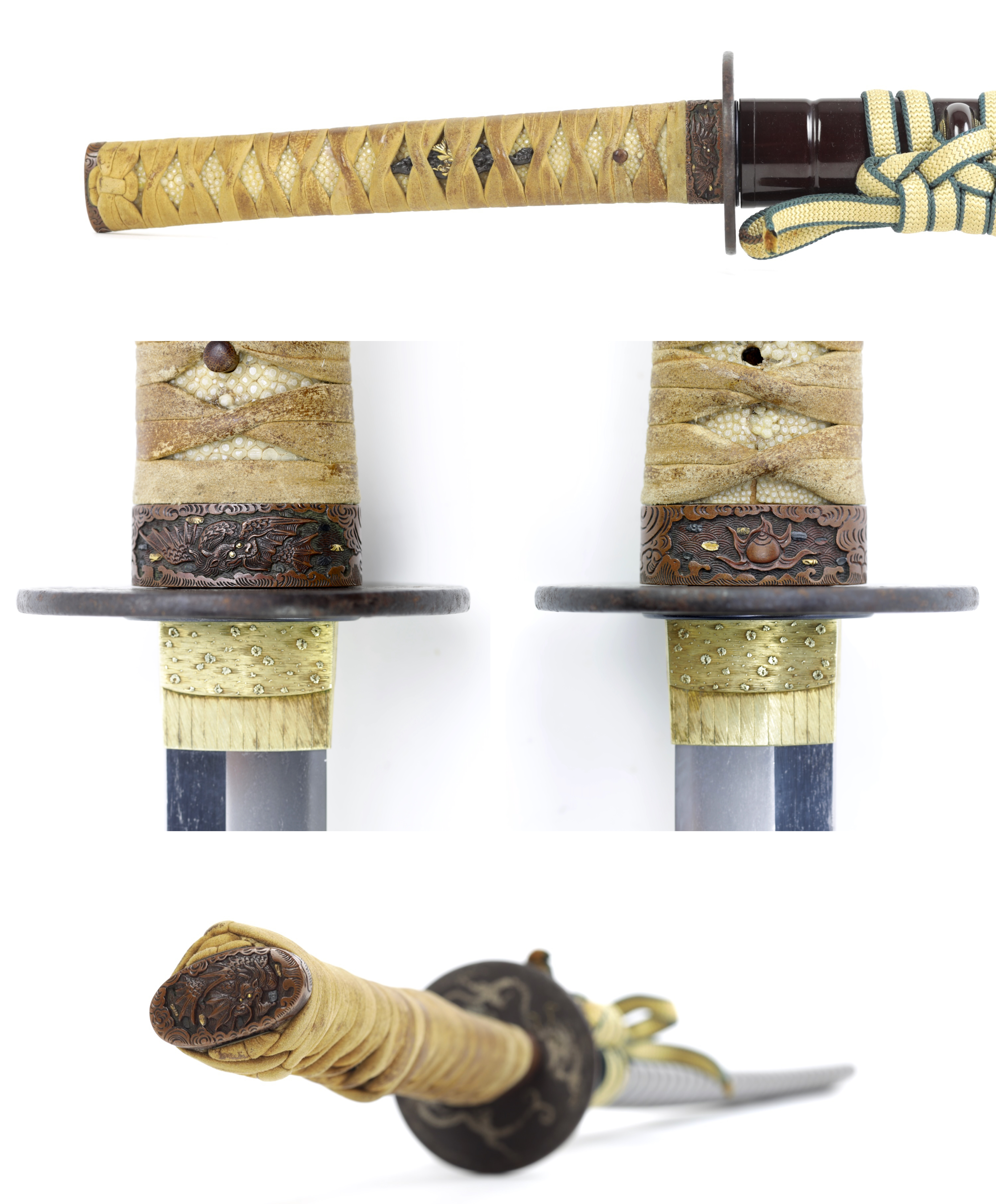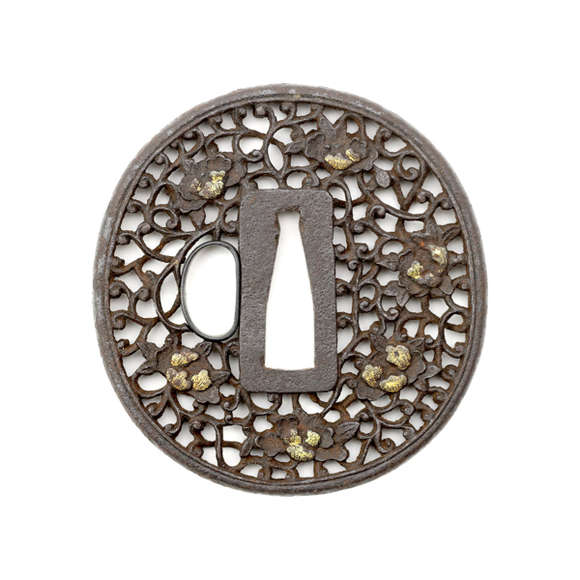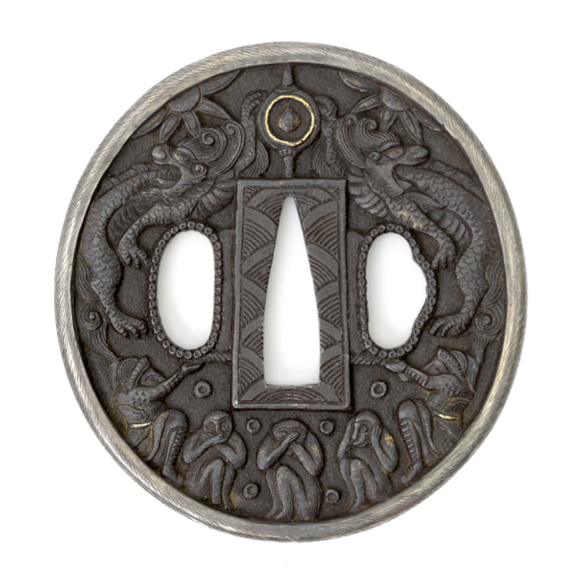Language: Japanese
Source: Antique sword fittings
Description
The signature "Hirado-jū Kunishige" (平戸住國重) or "Kunishige, resident of Hirado" appears on a group of mainly copper alloy sword fittings, but in rarer instances, other metals are seen. They are usually carved with designs of Chinese-style dragons chasing pearls. They sometimes include the addition of Western or quasi-Western script or other foreign-inspired motifs. Inlay is sometimes added, as is green patination in the recesses. On a very small group we find enamel, like the example below.

Hirado Kunishige tsuba.
Copper alloy, enamel, and gold inlay.
Mandarin Mansion inventory, 2023.

Hirado Kunishige fuchi and kashira.
From the koshirae that came with a Yamato Shikkake katana.
Sold by Mandarin Mansion in 2022.
Signatures
Signatures encountered are:
Hirado-jū Kunishige (平戸住國重), sometimes with kao (a personal seal)
Hirado Kunishige tsukuru (平戸國重造)
A puzzling element about Hirado Kunishige is that while the pieces are stylistically quite uniform, the signatures are not. There is also some variation in the quality of execution from excellent to quite mediocre. This led me to believe that it was probably a workshop or atelier rather than a single maker.
Historical context
Hirado island lies west of Kyushu, and was ruled by the Matsura daimyō family for over 800 years. Due to its convenient location, the island long served as a trade hub with mainland China. Even during Japan's period of isolation between 1639 to 1853, lots of trade still went through Hirado, both legally and illegally.
It was at some point home of trade posts of the Portuguese (1550-1565), British (1613-1621), and Dutch (1609-1641), and there was a base of Chinese pirates of the House of Zheng, lead by Zheng Chenggong, a.k.a. Koxinga. He was a powerful pirate lord who ran a maritime empire with bases across Southeast Asia, coastal China, and Japan.
Hirado was also from where Japanese Samurai mercenaries were hired out to colonial and pirate forces. In around 1600, a group of Korean potters settled on Hirado after being taken hostage during the Imjin wars. They produced a specific type of pottery that came to be known as Hirado ware. Perhaps contact with these Korean workers inspired Kunishige to experiment with enamel.
Sword mounts with strong foreign influence often emerged near foreign trade centers. Their market was most likely the (foreign) traders who brought them as gifts on diplomatic and trade missions.





